Main Menu
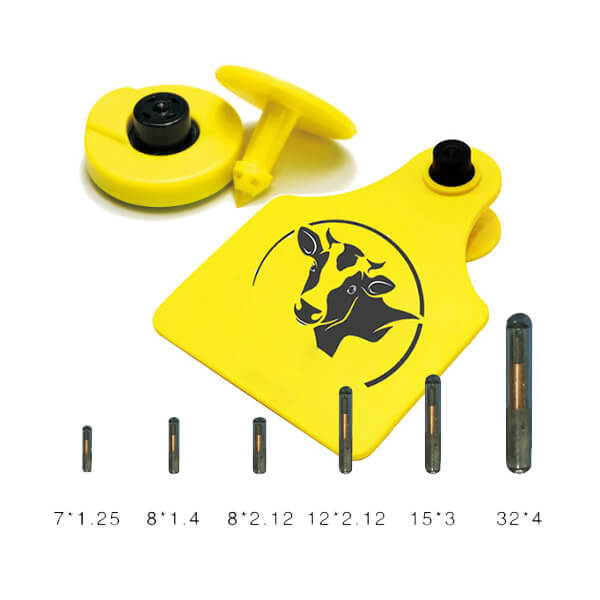
RFID animal tags are designed to enable farmers to identify and track their livestock. The devices are highly flexible, which allows you to use them on cattle, pets, fish, and any other animal you wish to track.
They are encoded with information such as the ranch name, a unique ID identifier, and age. Most of the tags are available as ear tags. However, you can opt for injectable RFID ampoule RFID tags
Become Our Partner
Fill out the form below to become our partner and get better prices and services.
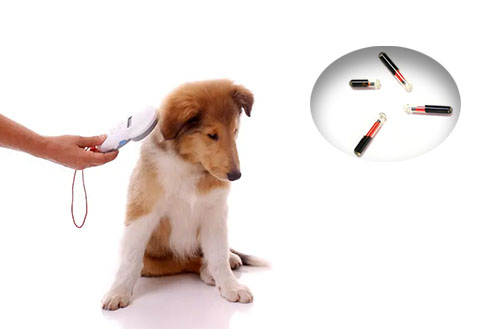
The animal identification glass tube tag has been developed for a variety of animal species. The tag is used for recording details about an animal, including contact information in case of its loss or theft, or to show ownership or breeding rights. It is ideal for use with small animals such as cats, dogs and horses
TPU animal RFID tag with buckle tracking consists of TPU, which is environmentally friendly and non-toxic. It is suitable for various animals, such as cattle, sheep, pigs and other animals. The material has an excellent elongation rate. The animal tags are soft and flexible and will not cause any harm to your pets.
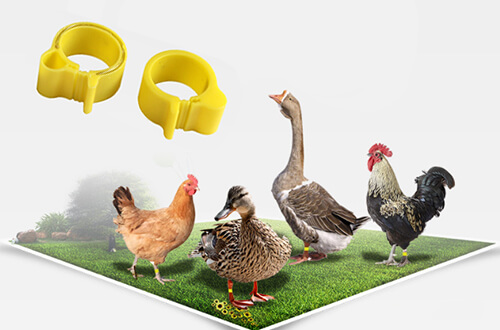
These RFID animal tags are made of ABS material with room for your contact information. Our animal tag is designed to be durable, difficult to remove and tamper-proof. There is a strong RFID chip hidden inside the foot ring on the back of these tags so that it can’t be replaced from behind and remove it from the collar. This ensures that your pet’s personal information will not be stolen by anyone.
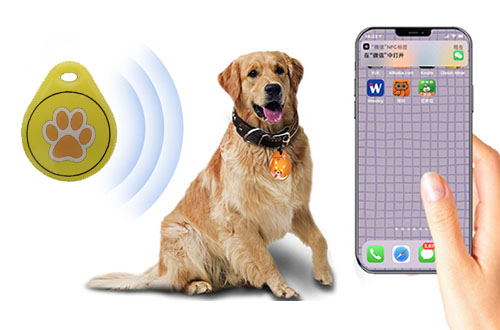
Epoxy RFDI Animal hangtags The Epoxy Animal tag is a smart solution to the security of your animal. It incorporates many design features such as RFID technology, a secure tamper resistant locking mechanism and strong epoxy.
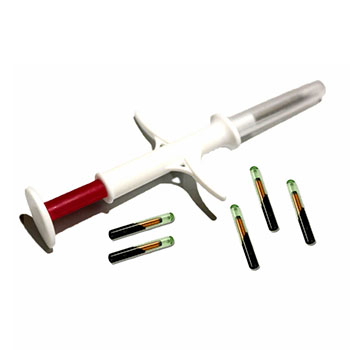
125khz/134.2khz RFID animal tags are mainly used for the management and identification of animals by injection
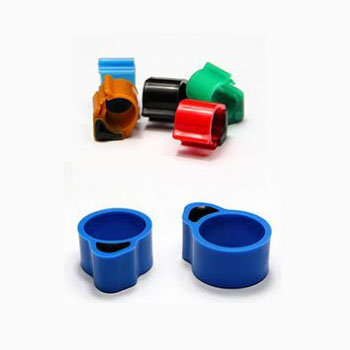
13.56MHz RFID animal tags are mainly used for poultry management and identification, such as chickens, ducks, pigeons, etc.
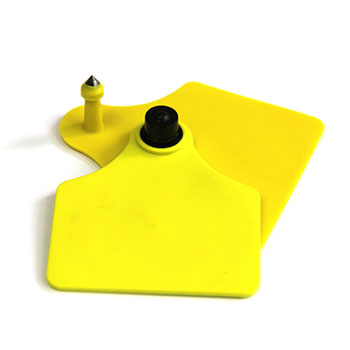
UHF 915MHz Animal RFID Tags are mainly used for animal identification and management in livestock industry, such as cattle, sheep, pigs, etc.
RFID tags cannot be used alone, so you need to make sure you have your own existing system or that you are a system integrator so that you can purchase your own RFID tags.
Chip is the core of RFID can store and exchange data, for the beginning of the system design will choose a good chip model, different chip features and prices are different, so you need to determine your own system to use the chip model.
If you do not know your own chip model, you can send us a sample of your hand to help you test the chip model.
The price is different for different materials and sizes, so choose the right material and size for you based on cost control.
We can customize the logo, print UID, Encoding data etc. for RFID Wristbands.
We have a professional technical team, come and compare prices and services
Animal RFID tags enable users such as livestock farmers, breeders and veterinarians to track livestock or identify pets and exotic animals as well as laboratory animals. These tags can be used for many applications such as agriculture, laboratory research and even pet owners.
RFID animal tags are replacing the traditional metal ID tags used in livestock management. Animals receive RFID ear tags that are tracked by fixed and handheld readers. Farmers use RFID to identify and track livestock inventory and to record basic health data for each animal.
The rfid animal tag consists of two discs connected together by the animal’s ears. The process is similar to striking a human ear. Each tagged animal is assigned a unique 15-digit tracking number, and the RFID reader identifies each animal by its RFID tag.
| IC | Memory | Protocol | Read/Write | Datasheet |
|---|---|---|---|---|
| TK4100 | 64bit | ISO7815 | Read-only | Download |
| EM4200 | 128bit | ISO7815 | Read-only | Download |
| EM4305 | 512bit | ISO11784/11785 | Read&Write | Download |
| EM4450 | 1kbit | ISO11784/11785 | Read&Write | Download |
| ATA5577 | 224bit | ISO11784/11785 | Read&Write | Download |
| Hitag 1 | 2048bit | ISO11784/11785 | Read&Write | Download |
| Hitag2 | 256bit | ISO11784/11785 | Read&Write | Download |
| MIFARE Classic 1k(S50) | 1K Bytes | ISO14443A | Read&Write | Download |
| MIFARE Classic 4k(S70) | 4K Bytes | ISO14443A | Read&Write | Download |
| MIFARE Ultralight EV 1 | 512bit | ISO14443A | Read&Write | Download |
| MIFARE Ultralight C | 192 Bytes | ISO14443A | Read&Write | Download |
| MIFARE Plus EV2(2K) | 2K Byte | ISO14443A | Read&Write | Download |
| MIFARE Plus EV2(4K) | 4K Bytes | ISO14443A | Read&Write | Download |
| MIFARE Plus SE(2K) | 2K Byte | ISO14443A | Read&Write | Download |
| MIFARE Plus SE(4K) | 4K Byte | ISO14443A | Read&Write | Download |
| MIFARE Plus X(2K) | 2K Byte | ISO14443A | Read&Write | Download |
| MIFARE Plus X(4K) | 4K Byte | ISO14443A | Read&Write | Download |
| MIFARE Desfire Light | 640 Bytes | ISO14443A | Read&Write | Download |
| MIFARE Desfire EV3(2K) | 2K Bytes | ISO14443A | Read&Write | Download |
| MIFARE Desfire EV3(4K) | 4K Bytes | ISO14443A | Read&Write | Download |
| MIFARE Desfire EV3(8K) | 8K Bytes | ISO14443A | Read&Write | Download |
| NTAG 213 | 144 Bytes | ISO14443A | Read&Write | Download |
| NTAG 215 | 504 Bytes | ISO14443A | Read&Write | Download |
| NTAG 216 | 888 Bytes | ISO14443A | Read&Write | Download |
| NTAG 213 Tag Temper | 144 Bytes | ISO14443A | Read&Write | Download |
| NTAG 424 DNA | 416 Bytes | ISO14443A | Read&Write | Download |
| NTAG 424 DNA Tag Tamper | 416 Bytes | ISO14443A | Read&Write | Download |
| ICODE SLIX | 896 bits | ISO15693/ISO 18000-3M1 | Read&Write | Download |
| ICODE SLIX 2 | 2528 bits | ISO15693/ISO 18000-3M1 | Read&Write | Download |
| ICODE SLIX-L | 256 bits | ISO15693/ISO 18000-3M1 | Read&Write | Download |
| ICODE SLIX-S | 1280 bits | ISO15693/ISO 18000-3M1 | Read&Write | Download |
| ICODE DNA | 2016 bits | ISO15693/ISO 18000-3M1 | Read&Write | Download |
| Tag-It™ HF-I Standard (TI 256) | 256 Byte | ISO15693 | Read&Write | Download |
| Tag-It™ HF-I Plus (TI 2048) | 2K Bytes | ISO15693 | Read&Write | Download |
| Higgs 3 | 96 bit epc,512 bit user | EPC Class1 Gen2/ISO 18000 6C | Read&Write | Download |
| Higgs 4 | 128 bit epc,512 bit user | EPC Class1 Gen2/ISO 18000 6C | Read&Write | Download |
| MONZA 4QT | 128 bit epc,512 bit user | EPC Class1 Gen2/ISO 18000 6C | Read&Write | Download |
| Monza 5 | 128 bit epc,32 bit user | EPC Class1 Gen2/ISO 18000 6C | Read&Write | Download |
| Monza R6 | 96bit epc | EPC Class1 Gen2/ISO 18000 6C | Read&Write | Download |
| Monza R6-P | 96bit epc,32 bit user | EPC Class1 Gen2/ISO 18000 6C | Read&Write | Download |
| UCODE 7 | 128 bit epc | EPC Class1 Gen2/ISO 18000 6C | Read&Write | Download |
| UCODE 7m | 128 bit epc | EPC Class1 Gen2/ISO 18000 6C | Read&Write | Download |
| Ucode 8 | 128 bit epc | EPC Class1 Gen2/ISO 18000 6C | Read&Write | Download |
| Ucode 8m | 96 bit epc,32 bit user | EPC Class1 Gen2/ISO 18000 6C | Read&Write | Download |
| UCODE DNA | 224bit epc,3072 bit user | EPC Class1 Gen2/ISO 18000 6C | Read&Write | Download |
RFID tags can help track and manage large farms or ranches with many animals. You can use tags to identify each animal and track its movement and location. This way, you can better manage your livestock and improve herd health.
It’s also important for preventing theft and finding missing animals. Whenever one of your animals leaves the RFID jurisdiction, you receive an alert. You can then investigate the situation and find the animal.
RFID animal tags allow researchers to better understand the behavior and habits of animals by tracking their movements. This information can help researchers develop new ways to manage and protect animals.
Animal shelters often use RFID tags to identify and track the animals in their care. It can help shelters reunite lost animals with their owners and find homes for adoptable animals.
These tags are also essential for tracking the vaccination records of shelter animals. This information helps ensure that shelter animals are up to date on their vaccinations and prevents the spread of disease.
Shelters can also use RFID tags to monitor the health status of animals. By tracking the vital signs of shelter animals, staff can quickly identify and treat any health problems.
RFID animal tags are used for animal breeding and management. You can use them to track their origin, age, weight, and health status. This information can help you make better breeding decisions and improve the overall health of your herd.
In addition, RFID tags can help you keep track of your animals’ vaccination records. When an animal needs to be vaccinated, you can look up its vaccination history in the RFID database.
Send the message successfully, we will reply you within 24 hours.